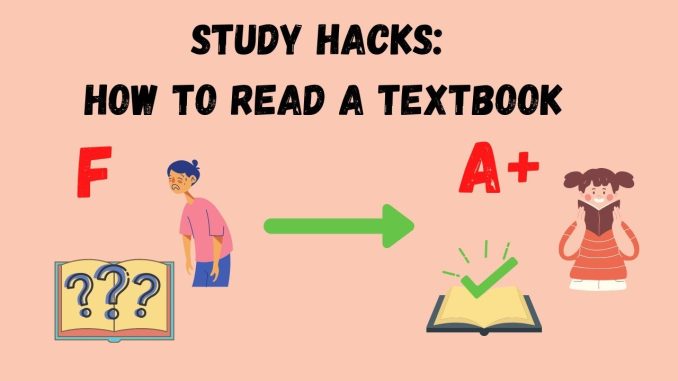
Reading a textbook efficiently is a skill that goes beyond simply turning pages or skimming chapters. In both academic and professional settings, textbooks are often dense with information, packed with complex ideas that require more than casual reading to fully grasp. Learning how to approach a textbook strategically can save time, reduce frustration, and deepen understanding. This process is not about rushing but about engaging thoughtfully with the material to extract meaningful knowledge that sticks.
At the heart of efficient textbook reading lies the concept of purposeful engagement. Instead of passively absorbing every word, efficient readers approach the material with clear objectives. They start by previewing the structure of the chapter or section—scanning headings, subheadings, summaries, and any highlighted terms. This initial overview sets the stage for what to expect, activating prior knowledge and helping to organize new information in the mind. For example, a business student tackling a chapter on marketing strategies might glance through the key topics to get a sense of the flow before diving into the details. This way, the reader’s brain is primed to connect ideas and see the bigger picture.
Once familiar with the chapter layout, reading selectively becomes essential. Efficient readers do not treat every sentence with equal weight. Instead, they focus on main ideas and supporting evidence while glossing over less critical information. This doesn’t mean ignoring details altogether, but rather recognizing when depth is necessary and when it’s acceptable to skim. For instance, a manager reviewing a textbook on organizational behavior might spend more time on concepts related to leadership styles that directly impact their work, while skimming sections on theoretical models less relevant to immediate needs. This selective attention keeps reading purposeful and prevents cognitive overload.
Engaging actively with the text is another crucial element. Passive reading—simply moving eyes over words—often leads to quick forgetting and superficial understanding. Efficient readers interact with the material by asking questions, making notes, and summarizing key points in their own words. Annotating a textbook with underlines or marginal notes highlights important information and aids retention. Similarly, pausing periodically to paraphrase what has been read reinforces comprehension. Imagine an entrepreneur studying a chapter on financial planning. Instead of just reading, they might jot down how certain budgeting principles apply to their own business, making the knowledge practical and personalized. These active strategies transform reading into an interactive process, enhancing both memory and insight.
Time management also plays a role in efficient textbook reading. Trying to absorb an entire textbook in one sitting can be overwhelming and counterproductive. Breaking reading sessions into focused, manageable chunks prevents fatigue and keeps the mind sharp. For example, a professional preparing for an exam might dedicate 30 to 45 minutes per session, concentrating fully during that time and taking breaks to refresh. This approach mirrors the brain’s natural attention span and fosters sustained engagement. Over time, regular, disciplined reading sessions accumulate to thorough comprehension without burnout.
A helpful but often overlooked practice is connecting new information with existing knowledge. Efficient readers constantly relate concepts from the textbook to their prior experiences or other learning. This mental linking builds a richer, interconnected understanding that makes recall easier. For example, a marketing specialist reading about consumer behavior might recall recent campaigns they managed or studied, integrating theory with practice. This contextualization not only deepens understanding but also highlights the real-world relevance of textbook content.
It’s important to recognize that efficient reading also involves knowing when to step back and review. Periodic review sessions consolidate learning and reveal areas that need further clarification. For instance, after completing a chapter, a reader might revisit summaries or test their understanding by answering end-of-chapter questions. This reflection helps solidify knowledge and identify gaps before moving on. In business environments, such as leadership training, revisiting core principles periodically ensures that strategies are not only learned but internalized and applied consistently.
Finally, technology can complement efficient textbook reading, especially in today’s digital age. Many textbooks come with online resources like quizzes, videos, and interactive exercises that reinforce learning. Using these tools strategically can make study time more dynamic and effective. For example, a finance professional using an e-textbook might benefit from interactive simulations that demonstrate market scenarios, turning abstract concepts into experiential learning. These supplemental resources, when used thoughtfully, enhance engagement and comprehension.
In conclusion, reading a textbook efficiently is less about speed and more about strategy and interaction. It involves previewing material to create a roadmap, selectively focusing on important content, actively engaging with the text, managing time wisely, connecting new ideas to prior knowledge, and regularly reviewing to reinforce learning. When these approaches come together, textbook reading transforms from a daunting task into an effective learning experience. Whether you are a student aiming to excel or a professional seeking to stay informed, mastering efficient textbook reading is an invaluable skill that promotes deeper understanding, saves time, and ultimately empowers you to apply knowledge with confidence and clarity.
Leave a Reply